Epsom salt in gardens has always been appreciated due to its versatility. This blog intends to scrutinize the various things this component does to plants to ascertain how Epsom salt improves plant growth and vigor. Magnesium is a critical element found in Epsom salts necessary for photosynthesis and chlorophyll synthesis. Moreover, the sulfate ions promote nutrient uptake and generally improve plant welfare. In this article, we will examine what benefits, correct application methods, and fallacies on using Epsom salt for plants entail. If you are a professional or an amateur gardener who wants your garden increase its productivity and remain healthy, you need to understand the effective use of Epsom’s salt.
Understanding the Basics of Epsom Salt
The Epsom salt or magnesium sulfate is a naturally occurring mineral compound that dissolves easily in water, enabling it to be absorbed by the plants readily. The chlorophyll molecule, which is essential for photosynthesis, contains magnesium in its center. This implies, therefore, that plants require magnesium if they are going to convert sunlight into energy effectively. However, sulfate (a union of sulfur and oxygen) fosters the formation of important enzymes and proteins that also boost nutrient intake as a whole. In sum, these elements assist in making stronger cell walls, better seed germination and upgraded nutrition absorption which finally results into healthier and more robust plants.
Epsom Salt – What Is It?
This is a compound of magnesium, sulphur and oxygen with a molecular weight of 246.47 g/mol whose chemical formula (MgSO₄·7H₂O) is known as Epsom salt. It normally occurs in geologic environments and dissolves readily in water which makes it an available source of essential elements for plants. The role of Magnesium (Mg²⁺) in chlorophyll formation is so critical for photosynthesis while sulfate (SO₄²⁻) helps in enzyme production and protein synthesis. They are rapidly assimilated into plants, which enhances nutrient uptake and thus boosts physiological functions. The general recommended application rate is usually around 1 tablespoon per gallon of water to provide balanced supply without causing any nutrient imbalance.
Two Main Elements: Sulphur and Magnesium
Magnesium ions play key roles in the structure of chlorophyll pigment that traps light energy during photosynthesis. In a chlorophyll molecule, the central ion surrounded by a porphyrin ring is magnesium since this can absorb light especially in blue and red wavelengths which are essential for energy conversion processes. Furthermore, Mg2+ ions act as cofactors for different enzymes that increase their activities during photosynthetic reactions. In plant tissues, optimum levels range between 0.15% and 0.25%, though lack of these leads to interveinal chlorosis, which is characterized by a reduced growth rate.
Sulfur, on its part, combines with sulfate ions (SO₄²⁻) to form amino acids like cysteine and methionine, vitamins such as thiamin or biotin, among others, that make up the proteins required in plants’ bodies for cell function or metabolism purposes. This means that if there are insufficient amounts of such nutrients, then it will have negative impact on the plant’s overall development since it could affect its growth and metabolism. The general recommendation is to keep sulphur content in plant tissues between 0.15% and 0.30% of dry weight. For example, sulfur deficiency causes stunted growth of plants and yellowing of the young leaves.
These technological specifications mainly portray how important magnesium and sulfur are in ensuring that plants remain healthy at all times and achieve the highest biomass; hence, they deserve consideration in agricultural practices.
Enhancing Plant Growth with Epsom Salt
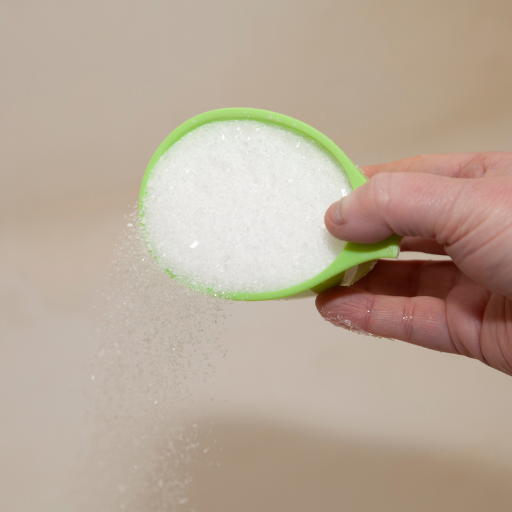
The Epsom salt – also called magnesium sulfate in chemical terms – supports plant growth due to its immediate provision of magnesium and sulfur which are critical in various physiological functions. When used as a foliar spray or soil amendment, Epsom salt can rectify magnesium deficiency which leads to better chlorophyll production and photosynthesis rates. Consequently, this causes more vigorous growth, greener leaves and increased uptake of nutrients by plants. Further, the presence of sulfur facilitates synthesis of amino acids and proteins for overall healthy plants that can resist diseases. Its constituent’s nutrients are immediately available, and hence, ease of application makes Epsom salt an appropriate supplement for both horticultural and agricultural purposes.
Improving Chlorophyll Production
- Magnesium (Mg): A central element in the structure of a chlorophyll molecule is known as magnesium. Insufficiency results into reduced leaf content and yellowing (chlorosis) followed by leaves falling off completely. In recommended amounts, this compound can be applied at normal dosages in terms of Epsom salts (magnesium sulfate) to maintain an adequate magnesium supply. Normally suggested rates for foliar applications may range from 1-2 tablespoons per gallon water.
- Nitrogen(N): Nitrogen is one of the major macronutrients required mostly by plants due to its role in amino acid/protein formation and its necessity for chlorophyll development. Proper nitrogen availability through well-balanced fertilization techniques can significantly raise chlorophyll content, thus increasing green pigmentation and the general health status of a plant.
- Iron (Fe): It is needed for synthesizing chlorophyll as well as functioning as a catalyst in several biochemical pathways such as synthesis of chlorophyll precursors. Iron deficiency often manifests itself in interveinal chlorosis where leaf veins remain green while the remaining parts turn yellow. For foliar applications, iron chelates or sprays are used to rectify the problem with an average concentration of 0.1-0.2% iron being recommended.
Increasing Nutrient Absorption
Optimizing soil pH, microbial activity and root health are some of the key factors that indirectly govern nutrient absorption in plants.
- Soil pH: Maintaining optimum soil pH is essential for nutrient availability. Most nutrients become available to plants when the pH is 6.0 and 7.5. Soil tests can determine if pH adjustments are needed; lime (calcium carbonate) raises pH while sulfur or aluminum sulfate lowers it. Adequate pH ensures efficient uptake of vital nutrients like nitrogen, phosphorus and potassium.
- Microbial Activity: Beneficial soil microorganisms, including mycorrhizal fungi and nitrogen-fixing bacteria, help absorb nutrients into plants. Mycorrhizal fungi aid in phosphorus uptake by increasing root surface area while other microbes convert atmospheric nitrogen into plant usable forms through fixation processes. Biofertilizers or organic compost could increase microbial activity thereby making more nutrients available to plants and promoting general plant health.
- Root Health: Healthy roots are essential for optimal nutrient uptake by plants, which requires practices such as appropriate watering, avoidance of compacting soils during planting, and use of root inoculants, among others, to enhance their growth. Ensuring the right levels of oxygen supply within the soil, together with enough moisture, prevents diseases from attacking roots, leaving strong systems capable of absorbing various minerals efficiently behind them.
To sum up, nutrient intake can be increased via pH adjustment of soil, promotion of microorganism activity and root nurturing. By using technical specifications and regional agricultural recommendations, this step could enhance the quality and quantity of crop yield.
Boosting Seed Germination
- Temperature: Different seeds require specific temperature ranges before they can germinate. Best germination of most types of seeds occurs within the range of 68-86°F (20-30°C). For cool-season crops such as lettuce, it is between 40-75°F (4-24°C) but warm-season crops like tomatoes prefer temperatures around 70-85°F (21-29°C).
- Moisture: The moisture level has to be enough to activate a seed’s metabolic pathways. Consistent moisture levels must be maintained without waterlogging. Field capacity advises uniformly moist soil, with a general recommendation of 50-75%.
- Light: Species vary in their light requirements. Light should shine directly on the seed while others like tomatoes and peppers do not require light at all to sprout. When exposed to16 hours of light per day, photoperiod-sensitive seeds display optimal growth.
- Oxygen: Enough oxygen is essential for respiration in seeds. Soil needs to be aerated properly and not compacted excessively. Oxygen availability might be restricted when you sow too deep. Generally, the recommended depth is between 1 and 3 times the diameter of the seed.
- pH Level: Most seeds do well under a soil pH between 6.0 and 7.0. Thus, neutral or slightly acidic soils are good for germination and nutrient uptake, whereas acid or highly alkaline ones can prevent them. Therefore, it is important that farmers test their soils to determine if their pH levels are within the right range.
Addressing Plant Deficiencies
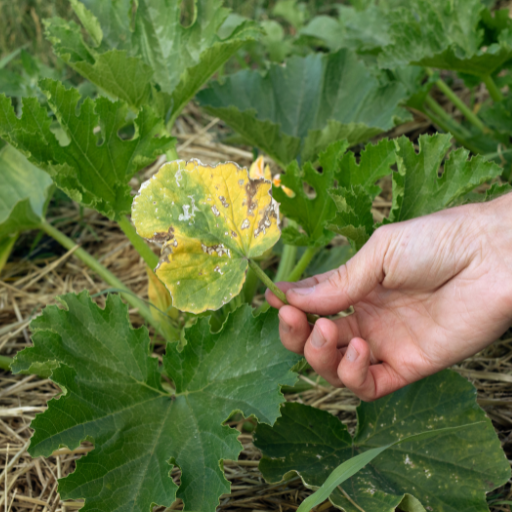
Maintaining optimal plant health and productivity requires understanding as well as addressing plant deficiencies. There are various symptoms that indicate nutrient deficiencies, and their accuracy determines the effective correction. One example is nitrogen deficiency which often shows up as yellowing of older leaves and reduced growth rate. In contrast, phosphorus deficiency is characterized by darkening of leaves and stunted growth, while under potassium deficiency leaf edges tend to become brown or scorched in color. Iron deficiencies can cause chlorosis, magnesium shortages result in interveinal yellowing whereas calcium deprivation results in blossom end rot.
To correct these inadequacies, soil tests must be conducted to determine exact quantities of nutrients, followed by appropriate use of fertilizers or other soil amendments. Regular checking for balanced nutrition, coupled with customized fertilization practices, will prevent shortages and help promote strong growth.
Identification Of Magnesium Deficiency In Plants
Magnesium deficiency in plants is manifested through a range of identified symptoms that can affect the healthiness of a plant considerably. An example is interveinal chlorosis, where the tissue between veins turns yellow while veins remain greenish, giving the symptom its name ‘interveinal’. This symptom occurs first on older leaves since, under deficiency conditions, magnesium being mobile moves to newer growths. Leaves may also develop a marbled appearance with necrotic spots, especially when they become very severe, curl upwards, or have premature leaf drop.
It technically plays an essential role in producing chlorophyll and activating enzymes; however, a lack of magnesium inhibits these processes, leading to reduced photosynthetic efficiency and, hence, stunted growth. Soil magnesium levels should ideally range between 25-50 ppm (parts per million), while foliar analysis should show around 0.15-0.40% dry weight for good plant health.
If the soil pH needs to be corrected, the remediation involves applying magnesium-containing amendments, like Epsom salts(magnesium sulfate) or dolomite lime. In case of acute deficiencies, foliar sprays containing magnesium nitrate can be used for quick relief. Continuous monitoring and adjustment of fertilizer application will ensure that the magnesium is always sufficient, hence no recurrences of the deficiency.
Symptoms of Sulfur Deficiency
Plant development is adversely affected by a group of separate symptoms indicative of sulfur deficiency. Among them is uniform chlorosis, where the entire leaf turns pale yellow, commonly starting with the new leaves. This symptom distinguishes sulfur deficiency since nitrogen starts in old leaves due to its relatively immobility within the plant. Furthermore, sulphur-deficient plants are stunted with thin spindly stems. The leaves may become small and brittle, while veins stay green as surrounding tissue turns yellow.
Technically speaking, sulfur is needed for amino acid synthesis as well as proteins and enzyme formation, whose lack or inadequacy results in impaired chlorophyll production and energy metabolism, resulting in disruptions, therefore negatively affecting normal growth and productivity levels of crops. For optimal plant health soil should have between 15-20 ppm (parts per million) levels of sulfur while sulfur concentrations in tissue analysis should indicate about 0.2-0.5% dry weight when done on dried tissues (Marschner 2012).
You can introduce soil amendments like gypsum (calcium sulfate) or elemental sulfur to resolve sulfur shortage. Gypsum can be used to increase the amount of available sulphur in the soil instantly without altering soil pH while for acidic soil, elemental sulfur may also be used. In case of an immediate and rapid solution sprays carrying sulphur can be used. For effective management of sulfur deficiency, it is important to adopt a consistent strategy for carrying out soil and tissue tests as well as optimizing fertilization schedules.
How Epsom Salt Corrects These Issues
Epsom salt is scientifically referred to as magnesium sulfate (MgSO₄) and is highly useful in correcting magnesium and sulpher deficiencies in plants. Upon application, Epsom salt dissociates into magnesium (Mg²⁺) and sulfate (SO₄²⁻) ions which are easily taken up by the plant roots. Magnesium plays a crucial role in photosynthesis, being a key constituent of chlorophyll, while sulfate contributes to the production of important amino acids and enzymes.
An alternative for this situation is to simply pour 1-2 tablespoons of Epsom salt per gallon directly on the ground around the base of the plant or spray it onto the leaves. Thus, these methods deliver additional quantities of MgO and SO3 immediately so that interveinal chlorosis occurs less often and slowed growth becomes less pronounced.
From a technical standpoint, optimum application rates are about 1-2 pounds per one hundred square feet using Epsom salts ensuring even distribution and penetration Regular monitoring is essential to maintain adequate levels of magnesium between 25 – 50 ppm’s; sufficient sulfur concentrations should range from 15 –20 ppm’s because at these levels robust plant health will occur with normal growth patterns.
Best Practices for Application
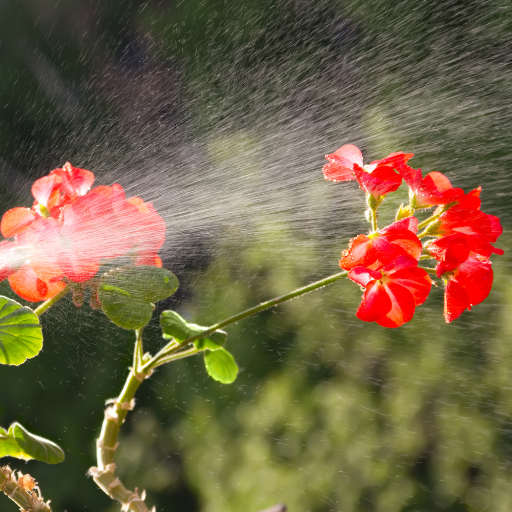
Using Epsom salt is a very precise exercise and for this to achieve the best results, one must be keen on quantities as well as timing. It is always recommended that before applying it you should first carry out a comprehensive soil test to determine the current magnesium and sulfur levels. This will help in knowing how much one needs. For instance, 1-2 pounds of Epsom salt will be applied over an area of 100 square feet, to ensure uniform diffusion on soil’s surface for better absorption. Watering should follow immediately so that any remaining solid particles dissolve and are taken up by roots as quickly as possible. The foliar applications require making 1-2 tablespoons of Epsom salt dissolved in a gallon of water, which can then be sprayed during early morning or late afternoon hours to prevent harm caused by scorching sunlight—monthly applications throughout growing season support nutrient levels and healthy plant development in general. Always analyze your soil and plant tissue so that application rates can be revised accordingly to match nutrient requirements.
Soil Amendment Techniques
When choosing effective soil amendment techniques, consider what your soil and plants specifically need. A basic amendment such as compost increases its structure through organic matter; this then retains moisture while enhancing microbial activity within the medium being amended. Soil pH may also be adjusted by adding lime or sulfur where dolomitic lime would correct both pH and add magnesium if required. Nitrogen contribution can come from green manure crops, particularly legumes, which, when tilled back into your garden, add organic matter into the soil. Gypsum is useful for breaking compacted soils thereby promoting better air circulation without changing pH levels since it adds calcium instead of altering acidity levels. Routine soil testing therefore remains necessary for customizing amendment practices thus enabling accurate adjustments together with optimal plants health outcomes.
Using Epsom Salt as a Foliar Spray
To use Epsom salt such that it is applied as a foliar spray, dissolve 1-2 tablespoons of Epsom salt in a gallon of water. When using this concentration, the two most essential components, namely magnesium and sulfur, will be available in adequate quantities for absorption through leaf stomata. Application should be done in the early morning or late afternoon to reduce scorching risk due to excessive sunlight. Accordingly, during the growing season it is recommended to repeat this foliar application every two weeks so that nutrient availability can remain consistent. Also, by closely examining your plants’ leaves, you would be able to tell if there is any imbalance in nutrient levels, either excess or deficient, like burning or yellowing, hence enabling you to adjust the rate of application.
Appropriate Dosages and Frequency
- For vegetables: Foliar sprays should be applied at a rate of 1 tablespoon per gallon of water every two weeks, especially to tomatoes and peppers that require magnesium supplements.
- In houseplants: Feeding these plants monthly with 2 tablespoons epsom salts dissolved in one gallon water is beneficial for ongoing growth and a balanced nutrition.
- For lawns: To promote healthy green growth turfgrass should receive bi-monthly sprays comprised of 1-2 tablespoons per gallon of water.
Dosage adjustments are important depending on different plant responses as well as soil conditions. For instance, continuous spraying should not occur every fourteen days because such a routine may lead to imbalances among nutrients, and ultimately, scorching results may follow suit. An accurate nutrient management can thus fine-tune dosages through observational trials involving soil/tissue testing for proper nutrient management.
Benefits for Specific Plants
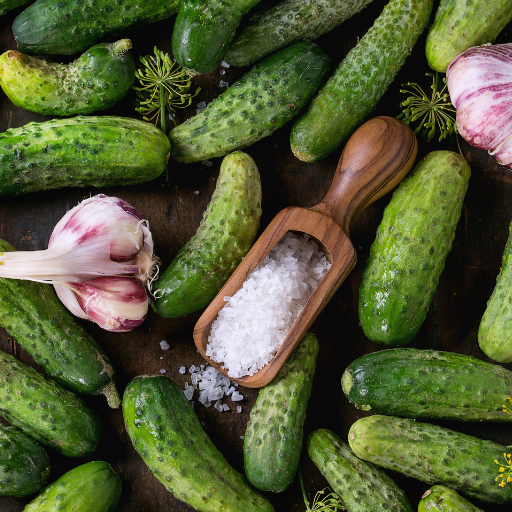
Epsom salt application has been known to greatly benefit tomato plants, especially in dealing with blossom end rot and nutrient uptake. Epsom salt’s magnesium helps in the production of chlorophyll, which gives rise to vibrant green foliage and a greater fruit set. In the same way, roses respond well to regular treatment with Epsom salts as evidenced by increased flower color intensity and plant vigour. It promotes strong roots and the intake of macronutrients such as nitrogen and phosphorus which are essential for good growth. Application of Epsom salt on peppers can result in higher yields and better growth primarily when they are grown in soils deficient of magnesium. This easily soluble form of magnesium curtails common challenges like leaf curling or dwarfism thus ensuring healthier plants that produce more.
Tomatoes plus Pepper
There are several benefits associated with using Epsom salt on tomatoes and pepper. It is a mineral that is scientifically referred to as Magnesium sulfate, and it plays a vital role in its metabolic functions. For tomatoes, magnesium sulfate used as an Epsom salt can help prevent blossom-end rot because it enhances the ability of the plant to take up nutrients. The recommended rates for tomatoes include 1 tablespoon per gallon of water applied bi-weekly through soil drenching or 1 tablespoon sprinkled around each plant base once a month during watering periods. When used as foliar sprays, one tablespoon of Epsom salts dissolved in one gallon of water can be applied every fortnight for better leaf healthiness and promotion chlorophyll production.
Peppers also benefit from Epsomite applications when cultivated in soils lacking magnesium, particularly those grown under poor environmental conditions (Cook & Reeder et al., 1972). Leaf greenness and overall plant vigor improved significantly (Figure 4). A common recommendation is mixing 1-2 tablespoons/gallon Epsom Salts bi-monthly for a foliar spray or soil drench. It helps prevent leaf curl and stunting by giving an easily available source of magnesium (Palm & Allen et al., 2008). These recommended rates must be confirmed by observational trials, soil and tissue tests to avoid excess use and possible negative consequences. Soil test results should be used as a guide to determine the amount of magnesium sulfate required.
Flowing Plants: Roses and Azaleas
Epsom salt applications on flowering plants like roses and azaleas can prove quite advantageous. The salts may help roses produce more vivid blooms and make their foliage greener. Recommended dosage is one tablespoon of Epsom salts per foot of plant height applied directly to the ground around the base of the plant. Alternatively, a foliar spray could be done using one tablespoon of Epsom salts dissolved in one gallon of water sprayed biweekly. This ensures better chlorophyll production and improved photosynthesis.
Azaleas also prefer acidic soils which are often deficient in magnesium thus they too can benefit from epsomite supplementation (Comerford et al., 1999). In both practices, 1 Tablespoon per gallon water is applied monthly as soil drenching only (Bagyaraj & Manjunath et al., 1990). This guarantees brighter colored flowers with healthy leaves due to the reduced amounts of magnesium deficiency that occurs during flowering (Dugger & Krogstad et al., 1980). Moreover, this same concentration through regular foliar sprays can also tackle problems related to magnesium uptake so that essential nutrients are provided for optimal growth of these plants. Regular monitoring plus soil testing should be done for modification purposes on such application rates where need arises for better results.
Vegetables that are green and leafy
Green vegetables and leafy greens such as spinach, kale and lettuce can also benefit from applying Epsom salt. The magnesium sulfate in epsom salt contributes to the overall nutrition of these plants, which in turn improves their yield. For best results 1 tablespoon of Epsom salt is recommended per gallon of water applied through soil drench once every two weeks during the growing season. This ensures that magnesium levels in the soil are restored resulting to more efficient production of chlorophyll and photosynthesis.
Besides, a foliar spray can be used with 1 tablespoon Epsom salts combined with a gallon of water sprayed bi-weekly. It enables nutrients absorption directly through leaves hence addressing any possible deficiency faster. In addition, this dual strategy supports better growth vigor and improved nutritional quality of vegetables. Therefore, regular monitoring of plant health and soil conditions is important to adjust application rates accordingly for an optimum growing environment.
Potential Risks and Considerations
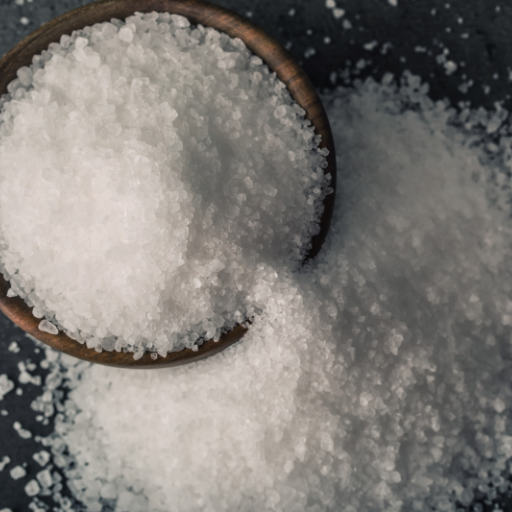
Though the use of Epsom salt is beneficial, it has potential risks and precautions. The overuse of Epsom salt may cause nutrient imbalance in soil that can damage plants by interfering with absorption of other minerals like calcium and potassium. The correct amount should be applied to prevent such an imbalance. Again, soil analysis for magnesium saturation should be done before using the Epsom salting system to make sure that there is indeed a need for additional magnesium. This accumulation of excess magnesium causes compression and reduced aeration, negatively impacting root development and water infiltration. Moreover, unselective application of Epsom salts in gardens contributes much to environmental pollution particularly affecting water bodies through run-off when rained on them. In conclusion, it is important to have balanced approaches towards the use of Epsom salt in horticulture so as to limit the possible risks.
Indicators of Overuse
Several signs are telling evidence of excessive use which should be carefully observed otherwise they will adversely affect plant health. The incidence of chlorosis, where leaves turn yellow because their ability to absorb nutrients has been disrupted, leading to impaired chlorophyll production, is another symptom that shows that too much salt has been administered to plants. Accompanied by an imbalance in essential minerals such as calcium, this also causes stunted growth both above and below ground level due to unhealthy root systems. Leaf burn or edges turning brown and crispy characterizes high levels of salts resulting from too much presence of Mg as shown by symptoms like leaf burn; this occurs when the concentration exceeds 50 mM. Another technicality parameter involves soil compaction as magnesite contents increase due to successive applications; hence, compactness increases, reducing porosity as well as limiting infiltration rates respectively, thereby stopping entry of water into soils after irrigation and slowing down movement (Koscielny 2004). Therefore optimization lies within desirable levels held at around 25-50 ppm (parts per million) which are best for plants’ well-being and not overdoing it.
Balancing Epsom Salt with Other Nutrients
To enhance plant health, Epsom salt must be balanced with other essential nutrients. In general terms, a complete soil test should be performed to give the baseline levels of major plant nutrients, including magnesium, calcium, potassium, and phosphorus. For example, magnesium sulfate, which is mostly found in Epsom salt, needs to be properly utilized according to specific crop requirements and the nutrient status of the soil.
For instance, lime or gypsum, which adds calcium into soils, can make an alternative amendment along with Epsom salt as long as it is done maintaining the proper Ca: Mg ratio between 2:1 and 5:1, hence posing no excessive Mg but allowing enough Ca for better nutrition. Gypsum also provides an option among soils having excess Mg since it increases calcium without compromising pH considerably.
On its part, getting enough magnesium has to counterbalance optimal quantities of potassium that promote growth in addition to disease control within crops. High amounts of magnesium antagonize potassium intake through competition for absorption sites [Kosey]. Thus if soil tests indicate deficiency one may have to complement using rich in mineral fertilizers such as potassium sulphate.
Furthermore, the integration of Epsom salt should take into account the existing sulfur content, as excess sulfate can affect the availability of such essential micronutrients like zinc and iron. As a technical guide, magnesium levels in soils are to be kept within 25 to 50 ppm while soil pH should ideally be maintained between 6.0 and 7.0 for optimum nutrient availability. Constant monitoring and adjustments guided by soil and plant tissue analysis provide an opportunity to harmoniously balance epsom salt with other nutrients that promote robust plant growth and yield.
Environmental Impact and Sustainability
Epsom salt is a vital source of magnesium and sulfate in plants. Nonetheless, its impact on the environment must be managed appropriately to ensure sustainability. The correct application rate is critical; excessive use can result in nutrient imbalances in soils that may damage plant ecosystems and affect groundwater quality. According to experts, sustainable use requires precision soil tests that inform Epsom salt applications which keep magnesium and sulfur contents at recommended levels without causing environmental degradation. Alternatively, organic fertilizers should be used along with different soil amendments that encourage sustainable soil management practices. Regular monitoring coupled with adaptive management is necessary in order to optimize plant development while maintaining ecological integrity
Practical Gardening Tips
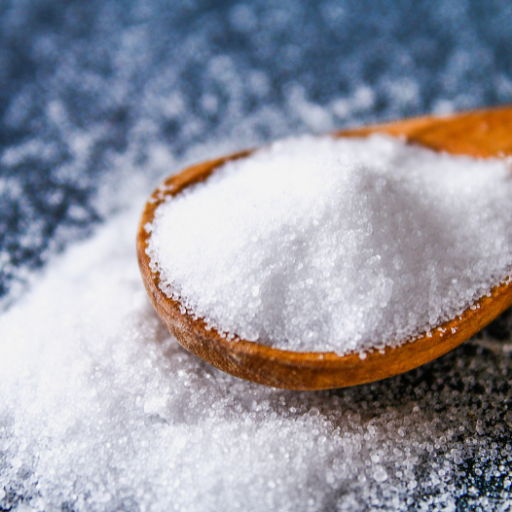
Before moving forward with its use in the garden, a soil test should be performed to determine if your soil is lacking magnesium and sulphur. To maintain general health of plants, dissolve one tablespoon Epsom salt in one gallon of water and once per month spray on foliage using this solution or better still, drench the soil. In order to address cases of magnesium deficiency, you will need to apply Epson salt sparingly for each plant by incorporating only one tablespoon into the soil surrounding it. For instance in houseplants, one teaspoon of Epsom salts per gallon of water is usually sufficient when more diluted solutions are applied. Always ensure that the amount applied has been adjusted according to specific crop requirements and soil conditions so as not to lead to imbalances.
Seasonal Guide
In spring therefore concentrate on preparing soil by adding epsom salts into beds before planting . This can be accomplished by mixing a tablespoonful of Epsom salt into each square foot of the preplanting bed; Before harvest begins, it’s important that you apply foliar sprays consisting of 1 table spoonfuls dissolved in a gallon of water of Epsom salts through out your farm.Early summer should thus see application made as foliar sprays using a similar solution containing 1 table spoonful per gallon after observing associated signs.In autumn however avoid its use since too much nutrients may accumulate within soils instead do some testing and also make compost that will help improve fertility next season.Wintertime applications are not normally necessary because, at this time, many plants are dormant; hence, they are not actively consuming nutrients. Also, regular monitoring and then following advice given during land assessment processes guarantee proper nutrient control all year round.
Combining with Organic Fertilizers
Combining organic fertilizers with Epsom salts will greatly increase plant growth while addressing major nutrient needs and magnesium deficiency.It might be helpful to mix homemade compost with Epsom salt.For every cubic yard of compost, make sure you add at least one cup of Epsom salt to it.This not only provides a slow release of magnesium but also helps create a balanced nutrient profile in the compost.
Epsom salt can also be added to prepared organic liquid fertilizers, such as fish emulsion or seaweed extract, for more magnesium. A good practice would be dissolving one tablespoonful of Epsom salts into each gallon of the fertilizer solution in liquid form and then applying it to leaves or roots as appropriate.
Moreover, Epsom salt is highly compatible with granular organic fertilizers like bone meal or blood meal. Add 1 cup of Epsom salts to every ten pounds of fertilizer when using granular fertilizer together with it.This will ensure even dispersion within garden beds when applied. Therefore, prior to application, soil testing is important since this will help determine existing levels and prevent any imbalances. Finally, continuous monitoring based on observed plant growth response aids in maintaining optimal soil quality as well as plant productivity.
Frequently Asked Questions (FAQs)
Q: What is Epsom salt and how does it benefit plants?
A: Epsom salt, also known as magnesium sulfate, is a mineral compound that can benefit plants by providing essential nutrients like magnesium and sulfur. When you add Epsom salt to your garden, it can help improve the health and vigor of plants, leading to bushier growth and more vibrant blooms.
Q: How much Epsom salt should I use for my plants?
A: The quantity of Epsom salt you use depends on the type of plant and its specific needs. Generally, for most garden plants, you can apply about one to two tablespoons of Epsom salt per gallon of water. For tomato plants, using two tablespoons dissolved in water can help prevent blossom end rot and improve fruit development.
Q: Can I use Epsom salt on all types of garden plants?
A: While Epsom salt can benefit many types of plants, some plants don’t like Epsom salt and may not respond well to it. It’s always good practice to test a small area or consult plant-specific guidelines before widespread application.
Q: How often should I apply Epsom salt to plants?
A: For most plants, applying Epsom salt once a month during the growing season is sufficient. However, this may vary depending on the type of plant and soil conditions. It is essential to monitor your plants and adjust accordingly if needed.
Q: Can Epsom salt be used to prevent pests in the garden?
A: While Epsom salt is not a pesticide, its nutrient-boosting properties can help improve plant health, making them more resistant to pest attacks. However, it is not a replacement for traditional pest control methods.
Q: Is Epsom salt safe to use in the vegetable garden?
A: Yes, Epsom salt is safe to use in a vegetable garden. Adding Epsom salt can help your vegetable plants by providing necessary nutrients that promote healthy growth. Just be sure to follow recommended application rates to avoid overuse.
Q: What is the best way to apply Epsom salt to plants?
A: There are multiple ways to use Epsom salt in the garden. You can dissolve Epsom salt in water and use it as a foliar spray or soil drench. Another method is to sprinkle Epsom salt directly onto the soil around the base of the plants and water thoroughly. For potted plants, a solution of Epsom salt and water can be applied directly to the soil.
Q: Are there any tips for using Epsom salt on plants?
A: Yes, some useful tips include: always water first before applying Epsom salt to avoid burning the plant roots, use Epsom salt as a supplement rather than a primary fertilizer, and combine Epsom salt with a balanced commercial fertilizer for best results. Additionally, be mindful of the specific needs of each plant species.
Q: Can using too much Epsom salt harm plants?
A: While Epsom salt is generally safe, using too much can lead to an imbalance in the soil, potentially harming plants. Overuse can deplete other essential nutrients in the soil and cause plant stress. It’s important to follow recommended dosage guidelines and avoid over-application.






